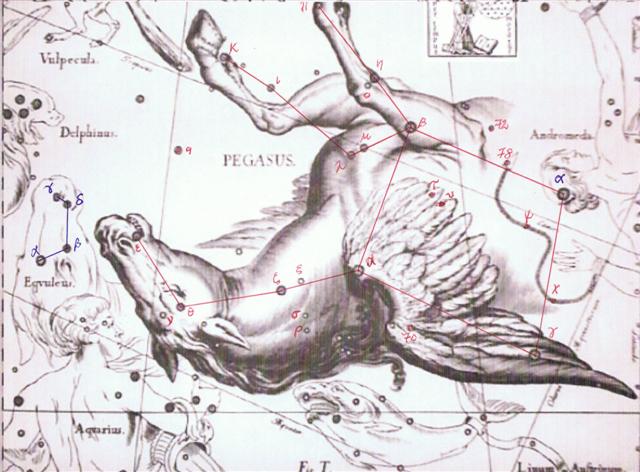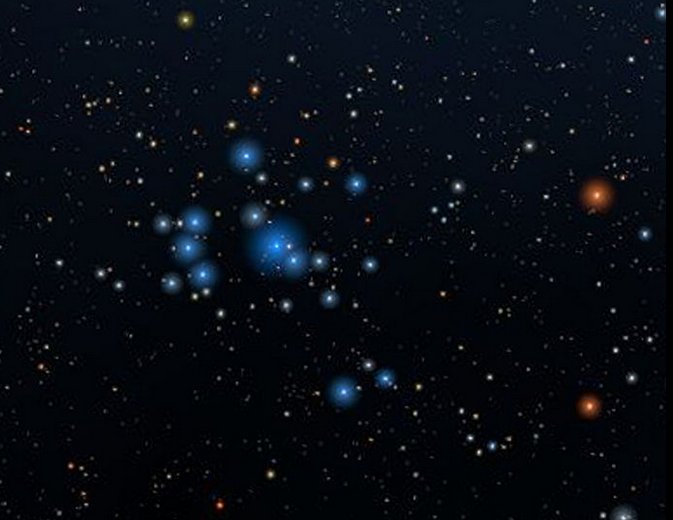There are several questions hovering above line Cb6. If I am right, then February 29 - the Gregorian leap day every 4th year - should 'be visible' in the night of August 29:
Immediately after February 29, in March 1, the positions of the stars ought to have been corrected, because 4 * ¼ = 1 and with 365 days in each year there has to be an addition with 1 day every 4th year. Matar (the star of 'life in death', η Pegasi) at RA 344.2, for instance, should be rising with the Sun in day 80 + 344 = 424 = 365 + 59 (February 28). In a leap year, however, Matar would factually not be rising heliacally in February 28 but in February 29. This means my star positions should be correct from Cb6-21 but in principle 1 position too early for the preceding glyphs. ... On one hand the Southern Fish is upside down which can be interpreted as a Sign of the end of the 'Fishy' winter time - and then the flow of water into its mouth could mean it is swallowing ('killing', matar) the last part of the dark winter season - but on the other hand the deluge from the Urn is ahead, as if indicating the healthy and life-giving rain (matar, vai ora) in front ... 
On side a we saw a leap year too. But this leap year was evidently according to our normal heliacal view:
The similarity between Ca13-1 and Ca13-2 (together with other aspects) 'proved' Ca13-2 illustrated the leap day. But possibly Ca13-2 instead could illustrate the opposite date which was seen in the night of February 29. And maybe Ca13-2 then should correspond to the stars which rose with the Sun in day 60 (February 29) + 184 = 244 (September 1). On side b August 29 (241) + 184 = 425 (February 29) = 365 + 60. But this means we should on side a count 60 (February 29) + 181 = 241 (August 29).
Earlier, however, when discussing side a, I added not 181 but 183 to the heliacal dates in order to reach the 'dates in the night'. String games can be used in the 'night' (in winter), but not when Sun is on his way up and still not has left Mother Earth. Hands belong early in the day, in 'a.m.' (in spring). Accordingly the triplet of glyphs at the beginning of line Ca13 (with empty hands) could refer to a time after spring, and the interpretation August could be correct (given a view from north of the equator). But the empty hands could alternatively refer to how spring not yet has arrived, with February as a possible reading. The strings in Cb6-19--21 suggest 'nighttime' (when strings were used for keeping track of the stars). In Cb6-21 a 'newborn' appears in front, following the preceding unit with 5 'feathers'. 5 + 4 = 9 could refer to the number of months for Sun. The reasonable interpretation is March 1 (the nighttime view). Vathorz Posterior is θ Carinae and lies in the Southern Pleiades star cluster (IC 2602):
My idea that opposite sides of the sky roof are interconnected in meaning - yet reversed - is here once again confirmed. The Pleiades in Taurus once was used as 'The Point of Aries', when the new year began, and the Southern Pleiades ought likewise be a place of 'birth'. The upside down Pegasus, on the other hand, surely is a place of 'death' (= end of February). Sun in March 1 was on his way to be reborn, this was possible to deduce from observing the Southern Pleiades close to the Full Moon. In the night of August 30 though, Sun was on his way out, because the stars of the upside down Horse were rising with the Moon. Gregorian dates combined with the seasons north of the equator were possible to put in parallel with the stars which were close to the Full Moon: But interpreting the glyphs is another story.
The Southern Pleiades (including the star θ Carinae, Vathorz Posterior) is precisely where the Trunk of the Oak (Robur Carolinum) is hiding behind the branches. Allen says that the original α Roburis was later changed to β Carinae (Miaplacidus), lower down on the Trunk. | |||||||||||||||||||||||||||||||||||||||||||||||||||||||||||||




.jpg)